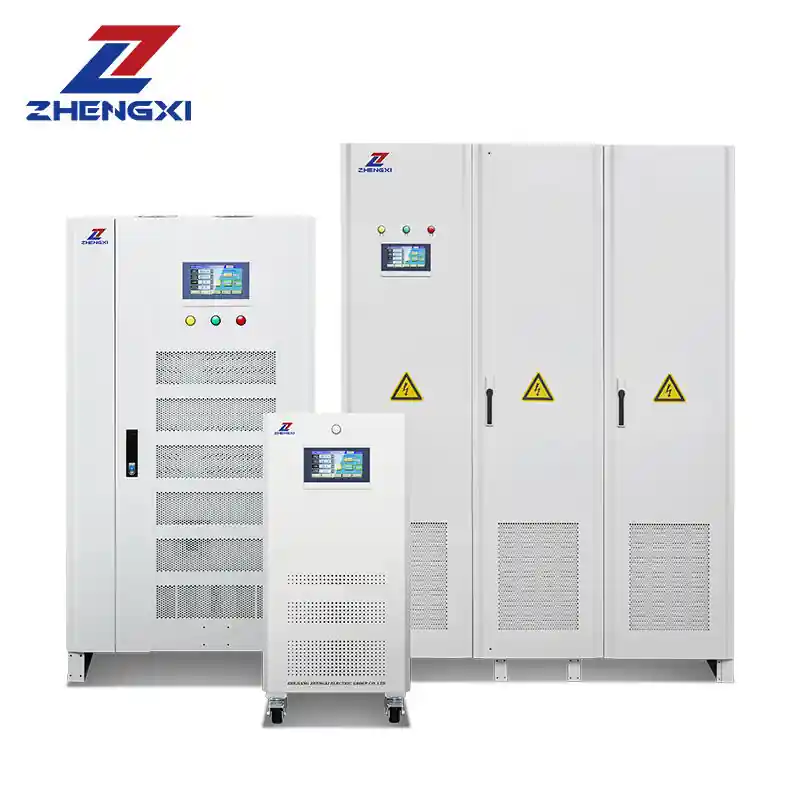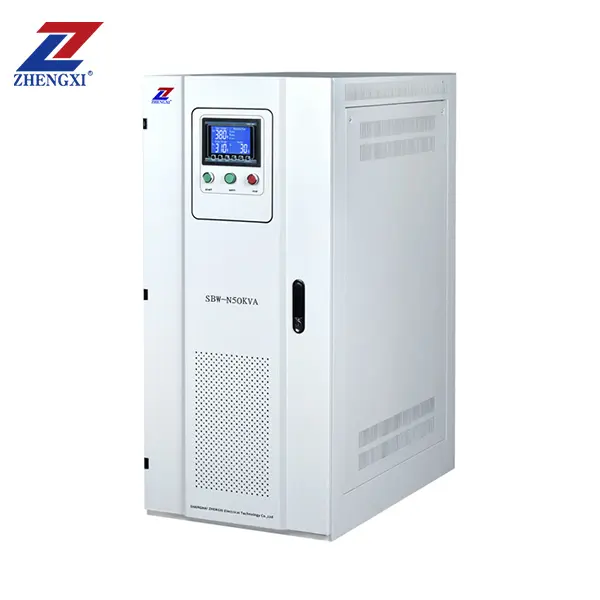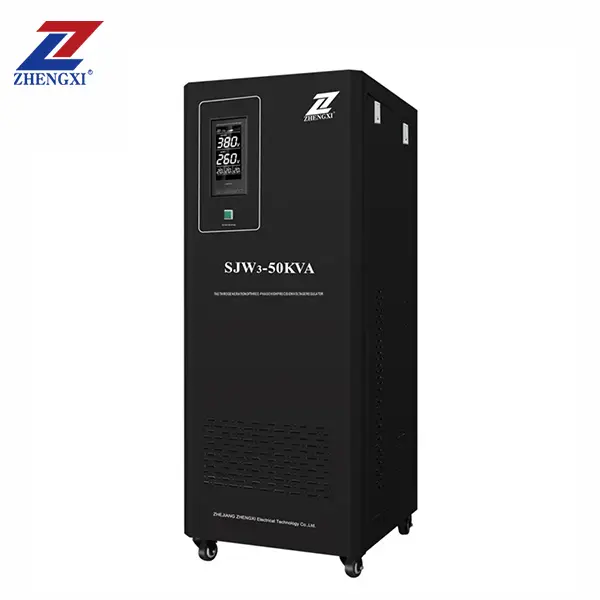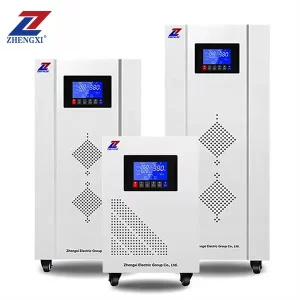A proteção de energia é uma fonte comum de confusão para engenheiros e equipas de aquisição: qual é a diferença entre um estabilizador de tensão e uma UPS, e quando é que precisa de um - ou de ambos? Este guia explica as principais tecnologias, as aplicações do mundo real, as regras de seleção e o motivo pelo qual muitas instalações industriais utilizam uma abordagem em camadas: Estabilizador de tensão → UPS → Equipamento.
Definição das principais tecnologias de proteção da energia - definir o estabilizador
O que é uma UPS?
Uma fonte de alimentação ininterrupta (UPS) fornece energia apoiada por uma bateria quando a rede eléctrica falha. Dependendo da topologia (standby/linha-interactiva vs dupla conversão online), uma UPS também oferece filtragem de picos de tensão, condicionamento de harmónicas e transferência rápida para a bateria quando ocorre uma falha. Nos sistemas UPS em linha (dupla conversão), o inversor alimenta continuamente a carga, o que elimina efetivamente a interrupção da transferência. Noutros modelos, a UPS muda para a bateria em poucos milissegundos; os tempos de transferência típicos variam consoante a topologia e o modelo.
Como funcionam - diferenças fundamentais (breve)
Estabilizador de tensão: Monitoriza e corrige continuamente a tensão da rede eléctrica através de reforço ou de bucking. Sem baterias. Ideal para condições de apagão amplo, mas não de blackout.
UPS: fornece uma reserva de energia armazenada durante uma falha total da rede eléctrica; pode também filtrar transientes e fornecer uma saída sinusoidal limpa, dependendo da topologia. Algumas topologias de UPS oferecem efetivamente um tempo de transferência zero (dupla conversão em linha).
Comparação rápida (alto nível)
- Objetivo principal: Estabilizador = correção da tensão. UPS = energia de reserva + algum condicionamento.
- Armazenamento de energia: Estabilizador = nenhum. UPS = baterias (ou volantes de inércia).
- Resposta típica: Estabilizador = correção contínua (sem comutação). UPS = transferência para a bateria em ms (dependente da topologia).
Quando utilizar o quê - cenários práticos
Utilize um estabilizador de tensão se:
- A sua rede apresenta grandes oscilações contínuas (episódios frequentes de subtensão/sobretensão).
- Protege motores pesados, compressores, soldadores ou outras cargas indutivas em que a tensão de linha corrigida evita o stress térmico e o disparo.
- O tempo de inatividade decorrente de interrupções curtas (<~ poucos segundos) é aceitável ou tratado por outros sistemas.
Utilize uma UPS se:
- Necessita de continuidade durante as falhas de energia (servidores informáticos, autómatos, dispositivos médicos).
- O seu equipamento necessita de uma onda sinusoidal limpa imediata e sem interrupções (eletrónica de controlo crítica).
- Necessita de um tempo de execução de curto prazo para encerramentos ordenados, processos tolerantes a falhas ou para fazer a ponte para um gerador.
Utilizar ambos (recomendado quando):
- Tem cargas sensíveis e uma rede instável. Um estabilizador à frente da UPS reduz o número e a magnitude dos extremos de tensão que a UPS tem de corrigir, reduzindo o stress sobre a UPS e prolongando a vida útil da bateria - uma prática comum em camadas na engenharia de fabrico e de centros de dados. (Para as fábricas de semicondutores, as normas da indústria, como a SEMI F47, definem as expectativas de imunidade à queda que influenciam frequentemente as estratégias de proteção).
Normas do sector e notas técnicas
- SEMI F47 descreve os requisitos de imunidade à queda de tensão para equipamento de semicondutores e é amplamente utilizado pelas fábricas quando especificam as expectativas de qualidade de energia. semi.org
- Orientações IEEE e IEC definir eventos de qualidade de energia (sags, swells, transientes) e práticas de monitorização recomendadas - úteis para o dimensionamento de equipamento de atenuação. Automação Rockwell
- A topologia da UPS é importanteUPS de dupla conversão em linha fornece a mais elevada continuidade e condicionamento; as unidades interactivas em linha ou em espera podem ter intervalos de transferência curtos (tip. um dígito de ms), dependendo do modelo. Verifique sempre as especificações do fornecedor relativamente aos tempos de transferência e à forma de onda de saída. Eatonapc
Regras práticas de seleção (lista de verificação rápida)
- Efetuar um breve estudo da qualidade da energia no local (envelope de tensão, frequência de queda/ oscilação).
- Se as oscilações de tensão excederem as tolerâncias do fabricante para a sua carga, especifique um estabilizador com uma gama de entrada adequada.
- Se as interrupções não planeadas causarem uma perda inaceitável de dados ou processos, adicione uma UPS dimensionada para o tempo de funcionamento e carga necessários.
- Para aplicações de missão crítica, preferir a abordagem por camadas (estabilizador → UPS → carga) e implementar monitorização/alarmes.
- Validar em relação a quaisquer normas específicas do sector (por exemplo, SEMI para fábricas, normas de dispositivos médicos para hospitais). semi.org
FAQ
P: Um estabilizador pode substituir uma UPS?
R: Não. Um estabilizador não pode fornecer energia durante um apagão. Apenas corrige a tensão. Para proteção contra cortes de corrente, é necessário um UPS ou um gerador.
P: A minha UPS tem "AVR" - continuo a precisar de um estabilizador?
R: Algumas unidades UPS incluem funcionalidades do tipo AVR para pequenas flutuações. Mas grandes oscilações fora da tolerância de entrada da UPS podem ainda assim forçar transferências repetidas ou a utilização da bateria. Em redes instáveis, um estabilizador dedicado antes da UPS reduz o stress e os ciclos da bateria.
P: Como é que começo a dimensionar?
R: Comece por uma auditoria de potência: meça o pico de kVA, as caraterísticas de arranque, o fator de potência e o envelope de tensão típico. A auditoria no local da ZHENGXI pode fornecer o kVA e a topologia recomendados. (Recomendamos a medição no local antes da especificação final).
Precisa de uma recomendação personalizada? Contacte a ZHENGXI para obter uma auditoria de energia gratuita e uma solução de Estabilizador + UPS personalizada que corresponda à disposição da sua fábrica e às necessidades regulamentares.








